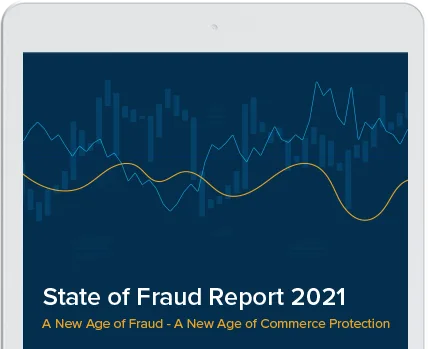Discounts are down, products are out of stock and the stress of holiday shopping has become serious. That perfect gift, or even something close, may be buried on a cargo ship off the coast waiting to unload, or in a truck stuck on a dock. With the supply chain problems, that gift might be anywhere but under the tree.
Gone are the holidays when the only worry was mailing a package on time. And here — maybe to stay — are the holidays where gift cards will reign.
Shoppers, faced with about 2 billion stockout messages last month and the continual uncertainty of the pandemic, are buying gifts earlier this season, a trend that began years ago to avoid that last-minute panic in December. This season, that panic came early. Shoppers boosted ecommerce sales to $72.4 billion in October, according to Adobe. Year-over-year sales online were up 14% that month, according to Signifyd’s Ecommerce Pulse data.
The hot sellers in those early rounds of holiday shopping included electronics, accessories and apparel, especially athletic shoes, Signifyd’s data shows.
- 164% Increase in the year-over-year sales of gift cards during the last six months.
- 65% Increase in the year-over-year sales of items other than gift cards during the last six months.
- 121% Increase in fraud pressure* detected in online gift card orders over the last six months.
- 26% Increase in fraud pressure* detected in online orders involving items other than gift cards in the last six months
- 8.5% Increase in year-over-year gift card sales in November
*Fraud pressure is a measure of very risky orders on Signifyd’s Commerce Network that are assumed to be fraudulent.
But as product delays continue, and the holidays move closer, gift cards are coming on strong. Sales of gift cards the past six months are up 164% and have outpaced non-gift-card growth by more than 150%, according to data from Signifyd’s Commerce Network.
Gift cards are handy for everybody — including fraudsters
Gift cards have been the most requested present for nearly 15 years.
“It’s kind of crass to give someone $20,” Jonathan Zhang, a marketing professor at Colorado State University, told Bloomberg. “It’s a lot more elegant to write a holiday card and include a gift card.”
Who doesn’t like gift cards? They’re nice to receive, but they’re even better to give. No fretting over sizes or the personal taste of the recipient. Digital gift cards mean the gift-giver doesn’t even need to leave the couch.
You know who else likes gift cards? Fraudsters. After all, they’re as good as cash and can be electronically pilfered, meaning fraudsters don’t need to leave the couch either.
And as gift-card sales are picking up, so are attempts to buy them fraudulently. Signifyd data shows fraud pressure on gift cards was up 35% in November over November 2020. Fraud pressure is a measure of very risky orders on Signifyd’s Commerce Network that are assumed to be fraudulent.
Both gift cards and gift-card fraud are no doubt trends that aren’t going away. Shoppers are expected to spend $28.1 billion in gift cards this year — the highest since $29.9 billion in 2018. The most popular gift cards are those issued by banks and those covering dining, department stores and coffee shops.
Gift cards will make up 40% of holiday shoppers’ purchases
One source predicts consumers will buy three or four cards, each averaging nearly $49 in value. For its part, payment service Blackhawk Network says shoppers will increase their gift-card spending by 27% this year, hitting an average of $270 worth. If that happens, Blackhawk goes on to say, gift cards will account for 40% of a shopper’s total gift purchases.
But along with this good news for retailers comes the bad: Criminals like gift cards also, because they’re easy to acquire and they are not connected to a physical address, which makes them hard to trace. Since June, Signifyd shows fraud pressure for gift cards is up 121%, growing at more than four times the pace of non-gift-card fraud.
Before gift cards, there were gift certificates, which were invented in the 1930s by department stores. McDonald’s popularized them in the 1970s with Christmas gift certificates and retailers followed. But even then there were fraudulent activities and retailers lost revenue. So along came gift cards, the first one from Neiman Marcus.
But since the store didn’t market the card it’s not considered as the inventor. Hey, a product doesn’t exist until marketing says it exists. Instead, historians credit Blockbuster with inventing the gift card. Remember Blockbuster? It was like Netflix with stores. Anyway, Blockbuster turned to gift cards in 1994, presumably to help curb fraud because its gift certificates were being widely counterfeited.
Source: Smithsonian Magazine
Last spring, risk analysts at Signifyd identified an upward trend of criminal gift card fraud pressure, so they adjusted Signifyd’s learning models and pummeled the trend by declining the fraudulent orders. Frustrated, criminal fraud rings moved on to other targets and criminal gift-card fraud on Signifyd’s Commerce Network has been negligible.
But like all ecommerce business frauds, gift-card fraud is cyclical. Fraud rings iterate and innovate, creating new ways to attack. They also constantly poke and prod until they find a weakness in fraud systems or a merchant relying on outdated payment fraud protection methods or technology.
Fraudsters like that gift cards convert to cash very easily
Digital fraudsters have myriad nefarious ways to scam retailers and consumers when it comes to fraudulently buying gift cards. Their main goal is to use the gift cards to purchase merchandise — typically electronics or other high-end products — and sell it quickly. Fraudsters also sell gift cards on the dark web or to a legitimate secondary market, where consumers can buy and sell partially used or unwanted gift cards at a discount. Of course, they sometimes just want to buy a little something for themselves.
“During the holiday season, you see a lot of gift card orders that you wouldn’t ordinarily see,” Signifyd spokesman Mike Cassidy said. “The orders come with all these signals pointing to identity and intent, who’s buying, from where, shipping to where, and Signifyd has seen these signals elsewhere on our Commerce Network. So, our constantly learning machines can connect the transaction to what’s happened in the past when those signals are present.”
Fraudsters have a few standard patterns for stealing gift cards online. Sometimes they use bots to rifle through retailers gift-card balance registers, looking for active cards with remaining value. Then they drain the balance with purchases or turn them into cash from the retailer. Another scam is to take over a customer’s account on a retail website. At that point, they might make a purchase and turn a refund into the equivalent of untraceable cash by requesting a gift card as payment.
The truth is fraudsters go after gift cards for the same reason stressed holiday gift shoppers do: They are convenient, flexible and fungible. That’s why gift cards’ popularity is unlikely to wane. And it’s why merchants need to prepare themselves with fraud solutions that understand the identity and intent behind every order.
Such solutions, including Signifyd’s Commerce Protection Platform, ensure that good customers are able to buy and use gift cards easily as they were meant to be used, while those seeking to benefit from the fraud advantages of gift cards are foiled.
Photo by Adam Winger on Unsplash
Wresting with gift-card fraud? We can help.












